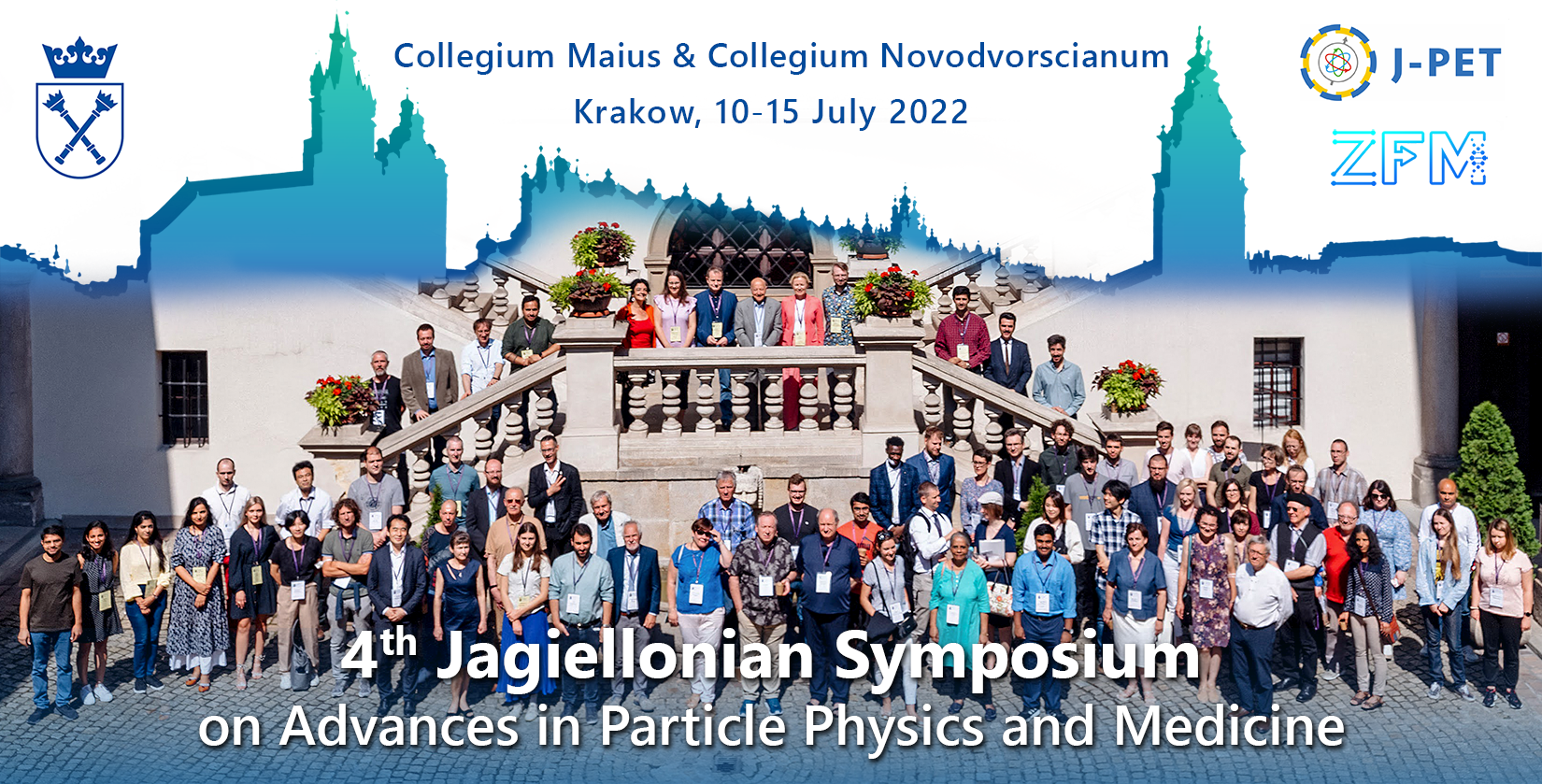Speaker
Description
Registration of gamma quanta is a fundament for many experiments from the field of physics, as well as in nuclear medicine. One of the approaches for its enabling is provided by the means of plastic scintillator detectors. Developed by the J-PET Collaboration multi-purpose device - J-PET tomograph [1,2], consists of axially arranged plastic scintillator strips, read out at both ends by a pair of silicon photomultipliers [3]. Independent on application of this system, either as a PET tomograph or proton beam range detector during proton therapy, the axial coordinate of the photon interaction within the scintillator is derived from the time difference of scintillation signals arrival on the opposite sides of the scintillator. Therefore, the axial spatial resolution for the interaction point reconstruction is limited by the timing resolution. A way to improve the axial resolution was presented in [4], where it has been examined that utilization of multiple orthogonally oriented wavelength shifter (WLS) strips can enhance the axial coordinate determination. Nonetheless, due to the lack of the depth-of-interaction detection, the rest of interaction position coordinates is set to the respective scintillators center.
In this work, a semi-depth-of-interaction method for radial coordinate reconstruction will be introduced based on the simulations of the aforementioned setup. If interaction occurred near to the WLS strips, the photons emitted within the cone dictated by the total internal reflection angle will largely interact in the nearest region, while in case of further place of interaction this region correspondingly expands. Moreover, a different approaches to the axial coordinate reconstruction will be presented.
Acknowledgements
The abovementioned work is presented on behalf of the J-PET Collaboration. This work was supported by the TEAM POIR.04.04.00-00-4204/17 program, the NCN grant no. 2021/42/A/ST2/00423 and the SciMat and qLife Priority Research Areas budget under the program Excellence Initiative - Research University at the Jagiellonian University. The study was funded by “Laboratories of the Youth” as part of the “Excellence Initiative - Research University” program at the Jagiellonian University in Kraków.

